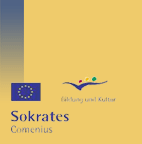The child: psychological and pedagogical considerations
The
Piagetian perspective
Perhaps the most influential body of
work regarding how intellectual development occurs is that of Swiss
psychologist Jean Piaget. Piagets (1952) work was primarily in the area of
cognition; he paid little attention to childrens emotions or motivations. The
central theme is an evolving intelligence or logic that takes different
forms as development proceeds. It is a stage theory of development. A stage
implies an inner consistency and harmony among all cognitive functions at a
given level of development. It also implies discontinuity, that is , each
successive stage is qualitatively distinct from the one that went before it,
even though the transition from one stage to another may build on and
incorporate elements from the earlier stage.
Piaget divides cognitive development into four distinct stages: the
sensory-motor stage (from birth to two years), the pre-operational stage (from
two to six or seven), the stage of concrete operations (from six or seven to about
eleven), and the stage of formal operations (from about age twelve on). The
chief characteristic of the sensory-motor stage is that the child has only a
limited capacity to represent and comprehend knowledge about the world and thus
to think. However, the child learns about the environment by constant activity,
exploration, and manipulation. Children gradually learn about object permanence
that is the continued existence of an object that goes out of sight. During the
second stage, the pre-operational, the child forms inner representations of the
world - symbolic play, images, language, and drawing - and can act on them, as
in making believe. In the stage of concrete operation, the child is now capable
of a limited number of logical processes, especially when he or she is given
concrete materials to manipulate, such as blocks for sorting. Their
understanding is still dependent on concrete experience of events and objects,
rather than on abstract or hypothetical ideas. From age twelve on, people are
said to be in the stage of formal operations, with the ability to reason
logically, and to formulate and test abstract hypotheses.
Piagets general mechanism for the
formation of knowledge is equilibration, the resolution of cognitive imbalance
by a new balanced organization at a higher level. Equilibration involves two
processes - assimilation and accommodation. As children develop, they integrate
various schemata into organized, inclusive patterns of knowledge, which
eventually form a coherent vision of self and world.
Piaget regards development as an
interaction between physical maturation (organization changes in anatomy and
physiology) and experience. Through these experiences, children construct
knowledge and understanding hence, the concept of constructivism and the
paradigm for constructivist pedagogy and curricula. In this approach,
curriculum starts with the interests of the learner, building new information
and experiences on the learners prior knowledge and experience. It capitalizes
on the childs immediate curiosity and initiative. As Kamii (1990) emphasises,
when curiosity and initiative are present we know that mental activity is
taking place.
Piagets theory places action and
self-directed problem-solving at the heart of learning and development. By
acting on the world, the learner comes to discover how to control it.
Piagetian theory has come under
increasing criticism in recent years, particularly for its view of stages and
egocentrism, its emphasis on childrens incompetence, and its inattention to
cultural and social aspects (Graue and Walsh, 1998). Donaldson (1978) showed
convincingly that Piaget underestimated childrens cognitive abilities across a
number of domains. As many post-Piagetian researchers have shown, children are
much more cognitively competent than had been supposed. The current
understanding, within the framework of social-cognitive theory, is that gender
behaviour results from the interaction between the environment and the childs
social knowledge and the development of the cognitive structures. During their
individual development, children learn at first through an external regulation
process, followed by a process of self-regulation.











